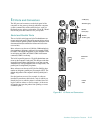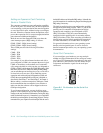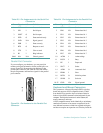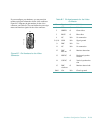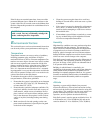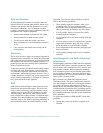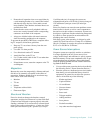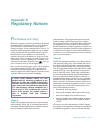
Maintaining the System C-131
Appendix C
Maintaining the System
Proper use of preventive maintenance procedures can
keep your system in top operating condition and minimize
the need for costly, time-consuming service procedures.
This appendix contains maintenance procedures that you
should perform regularly.
Data Preservation
Everyone inadvertently deletes files at one time or
another. Also, hard-disk drives can fail after extended
use, so it is not a question of whether you will even-
tually lose data, but when. To avoid such loss of data, you
should regularly make backup copies of all hard-disk
drive files. Frequent, regular backups are a must for any-
one using a hard-disk drive.
Scheduling Backups
The frequency with which backups should be made
depends on the amount of storage space on a hard-disk
drive and the volatility of the data contained on the drive.
Heavily used systems require more frequent backups
than systems in which files are seldom changed.
Dell recommends that you back up the hard-disk drive at
least once a week, with a daily backup of those files
known to have been changed. Following these guidelines
ensures the loss of no more than a day’s work in the event
of a hard-disk drive failure or if you inadvertently delete
one or more important files.
As further insurance against data losses, you should keep
duplicate copies of the weekly and monthly backups at an
off-site location. Doing this ensures that you lose no more
than a week’s work, even if one of the on-site backups
becomes corrupted.
Backup Devices
Tape drives are fast, convenient, and affordable devices
that can back up data at rates of up to 1.6 megabytes per
second (MB/sec) (sustained, with data compression) and
can often run unattended. Dell offers tape drives with
storage capacities in the range of 4 gigabytes (GB) to
24GB per tape cartridge and recommends these drives
and their associated backup software for use as system
backup devices.
Recovering Data
Some hard-disk drive failures are recoverable. In these
cases you may be able to recover all lost data if the
proper utility software is available. Even losses such as
accidentally deleted files or accidental reformatting of a
hard-disk drive can be reversed with these utilities.
If the computer system is running MS-DOS, many appar-
ent data loss problems are due to corruption or erasure of
the hard-disk drive’s master boot record (MBR),
MS-DOS boot sector, or file allocation table (FAT). That
is, accidental deletion of files or accidental reformatting
of the hard-disk drive alters the MS-DOS boot sector, the
FAT, and the root directory.
However, such accidents do not actually erase the con-
tents of the hard-disk drive files until new data is written
to the sectors containing these files. With the appropriate
recovery utility, the data stored in these areas can often be
restored, meaning that you can recover most, if not all, of
the data.
Unlike using the format command on a hard-disk drive,
using format on a diskette completely erases all the data
on the diskette unless you use the diskette format pro-
gram included in the Mace Utilities.





